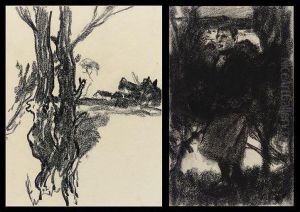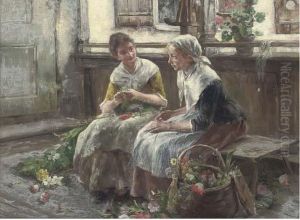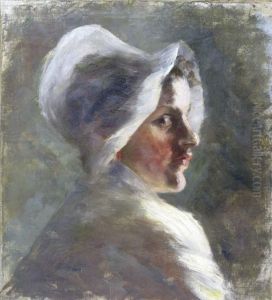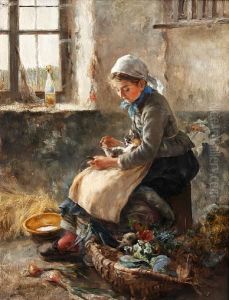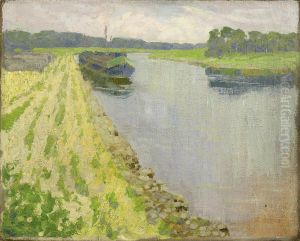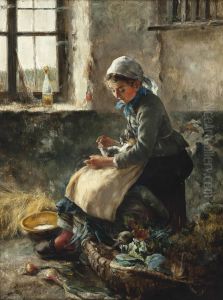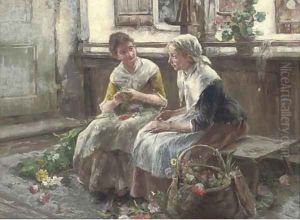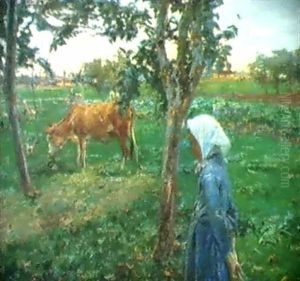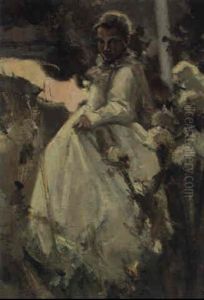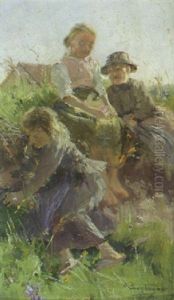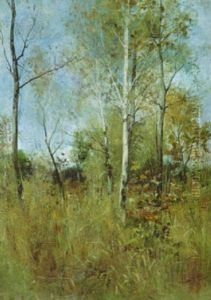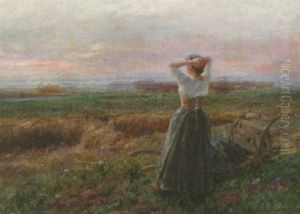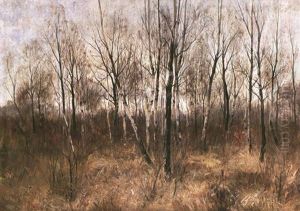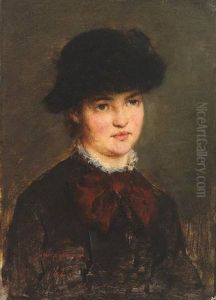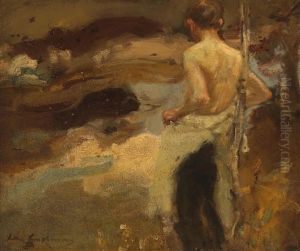Arthur Langhammer Paintings
Arthur Langhammer was a German painter and illustrator, born in 1854 in Jagstfeld, now part of Bad Friedrichshall, Germany. Known for his genre paintings, landscapes, and illustrations, Langhammer's work captures the essence of rural and urban life in Germany towards the end of the 19th century. His artistic journey began at the Nuremberg School of Arts and Crafts, where he honed his skills before moving on to further his studies at the Munich Academy of Fine Arts. Munich, a vibrant artistic hub at the time, played a crucial role in shaping Langhammer's style and career.
Langhammer's work is characterized by its detailed depiction of everyday life, imbued with a sense of realism and emotional depth. He was particularly fascinated with the Bavarian countryside and its inhabitants, which became a recurring theme in his paintings. His ability to capture the nuanced interplay of light and shadow, combined with a rich color palette, brought his rural scenes to life, earning him recognition and admiration within artistic circles.
Throughout his career, Langhammer contributed illustrations to various magazines and books, showcasing his versatility as an artist. These works not only highlighted his skill as a draftsman but also his keen observation and ability to tell stories through visual means. Despite his success, Langhammer remained deeply connected to his roots, often returning to the landscapes and scenes of his childhood for inspiration.
Arthur Langhammer passed away in 1901 in Dachau, a town that had become synonymous with an artists' colony, attracting painters from all over Germany and beyond. His legacy, however, lives on through his paintings and illustrations, which continue to be celebrated for their contribution to German art history. Langhammer's work provides a poignant glimpse into the socio-cultural landscape of Germany at a time of significant change, making him an important figure in the transition from traditional to modern artistic expressions.
